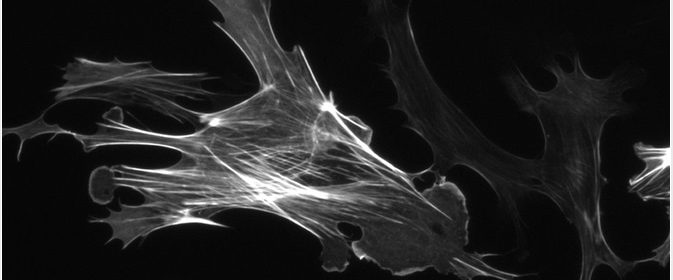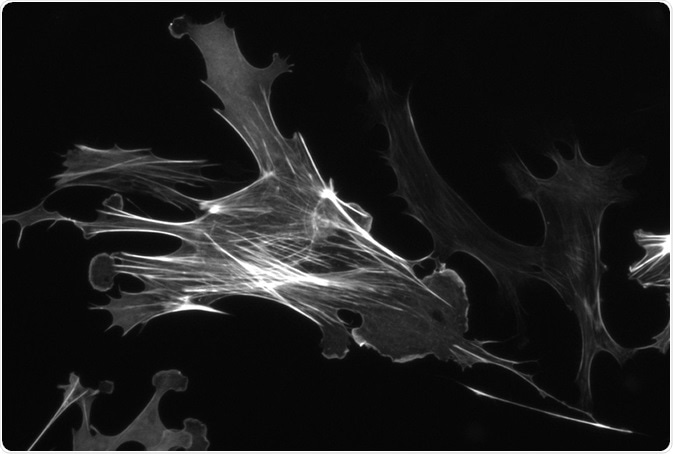History and Advances of X-Ray Microscopy

X-rays were discovered by Wilhelm Conrad Röntgen in 1895. Rontgen observed weak green light coming from barium platinocyanide while he was analyzing ‘cathode rays’ (or electrons).
Credit: Andre Nandal/Shutterstock.com
J Krz, one of the pioneers in the field of X ray microscopy, described the history of the X ray microscope as a “story of spies, heroes, villains, false starts, and a brush with real fame”.
History of the X ray microscope
X-rays do not reflect or refract easily and the rays passing through an object can be captured using a charge-coupled device or a CCD detector. A few years after the discovery of X-rays, images of circulatory system were captured by increasing the contrast in the radiograph. The absorption of X rays is dependent on the density of material; thus, imaging of soft tissues requires an additional contrast agent to visualise the structures with greater clarity. This was done by addition of lead oxide.
In 1913, tungsten filament in a vacuum tube was used as a cathode or a source of X rays. This tube also came to be known as ‘Coolidge tube’ named after the scientist who invented it. After World War II, several groups worked on X ray microscopy. Paul Kirkpatrick and Albert Baez in Stanford University (USA) used parabolic curved mirrors to focus the X-rays.
Subsequently, Fresnel zone plate of concentric gold or nickel rings were also used to concentrate the X rays on to the sample. Kirkpatrick, Cosslett, and Engstrom headed pioneering groups in the field of X ray microcopy. Interestingly, decades later, Cosslett was found to be involved in clandestine activities with the Soviet during the War.
One of the major turning points in the field of X ray microcopy was the use of synchrotron radiation as an X-ray source. The first synchrotron-based x-ray microscope was built by Horowitz and Howell in 1972. Apart from high brightness, the synchrotron radiation is also tunable and coherent.
Wave lengths in the order of 7 nm to 0.7 nm are used in X ray microscopy which is also its physical limit of resolution. It has a high penetration depth of 100 nm and a temporal resolution of 10psec.
Advances in X-ray microscopy
Increased resolution
X ray imaging can be performed using both soft and hard X rays. Hard X rays have wavelength shorter than 0.2 nm, while soft x rays have wavelength longer than that. Hard X rays have greater penetrating power andgreater energy but can induce more damage on the sample during imaging.
Recently, scientists at Lawrence Berkeley National Laboratory used soft X rays, which have wavelengths ranging from 1 to 10 nm, to achieve the highest resolution ever in X ray microscopy. They used ptychography, a coherent diffractive imaging technique, where the X ray beam scattered by an object produces a diffraction pattern. This data is then recorded by an X-ray CCD (charge-coupled device) and a high spatial resolution image is reconstructed. A resolution of 3 nm was recorded in this study.
Improved focusing
Several advances have been made in X-ray beam focusing technology. Kirkpatrick-Baez mirror, or KB mirror for short, is used to focus beams of X-rays. KB mirror reflects the X rays off a curved surface and is coated with a heavy metal.
Several modifications to the KB mirrors have made extremely precise optical system where nanofocusing of x-rays is possible. The latest research reported a focused X ray beam spot of 5 nm.
Reducing chromatic aberrations
Apart from KB mirrors, the use of Fresnel zone plates (FZP) to focus the X rays are also very prevalent. However, Fresnel Zone Plates (FZP) have strong chromatic aberrations. Chromatic aberration or chromatic dispersion occurs when a lens is unable to focus the colors of a beam to the same convergent point.
This leads to ‘colour fringing’ or ‘purple fringing’. Thus, in most of the available X-ray microscope there is a trade-off between spatially resolved image and achromatic image. To fix this problem, a research group from Osaka University, Japan recently used an optical system consisting of two monolithic imaging mirrors. Using this set-up, they could clearly resolve 50-nm features without chromatic aberration.
Sources:
- X-Ray Microscopy. Max Planc Institute for Intelligent systems
- Soft X ray microscopy. Princeton Instruments.
- X ray microscopy-An overview. ScienceDirect Topics
Further Reading
- All X-Ray Microscopy Content
- Applications of 3D X-ray Microscopy
- What is 3D X-Ray Microscopy?
Last Updated: Aug 24, 2018

Written by
Dr. Surat P
Dr. Surat graduated with a Ph.D. in Cell Biology and Mechanobiology from the Tata Institute of Fundamental Research (Mumbai, India) in 2016. Prior to her Ph.D., Surat studied for a Bachelor of Science (B.Sc.) degree in Zoology, during which she was the recipient of anIndian Academy of SciencesSummer Fellowship to study the proteins involved in AIDs. She produces feature articles on a wide range of topics, such as medical ethics, data manipulation, pseudoscience and superstition, education, and human evolution. She is passionate about science communication and writes articles covering all areas of the life sciences.
Source: Read Full Article
